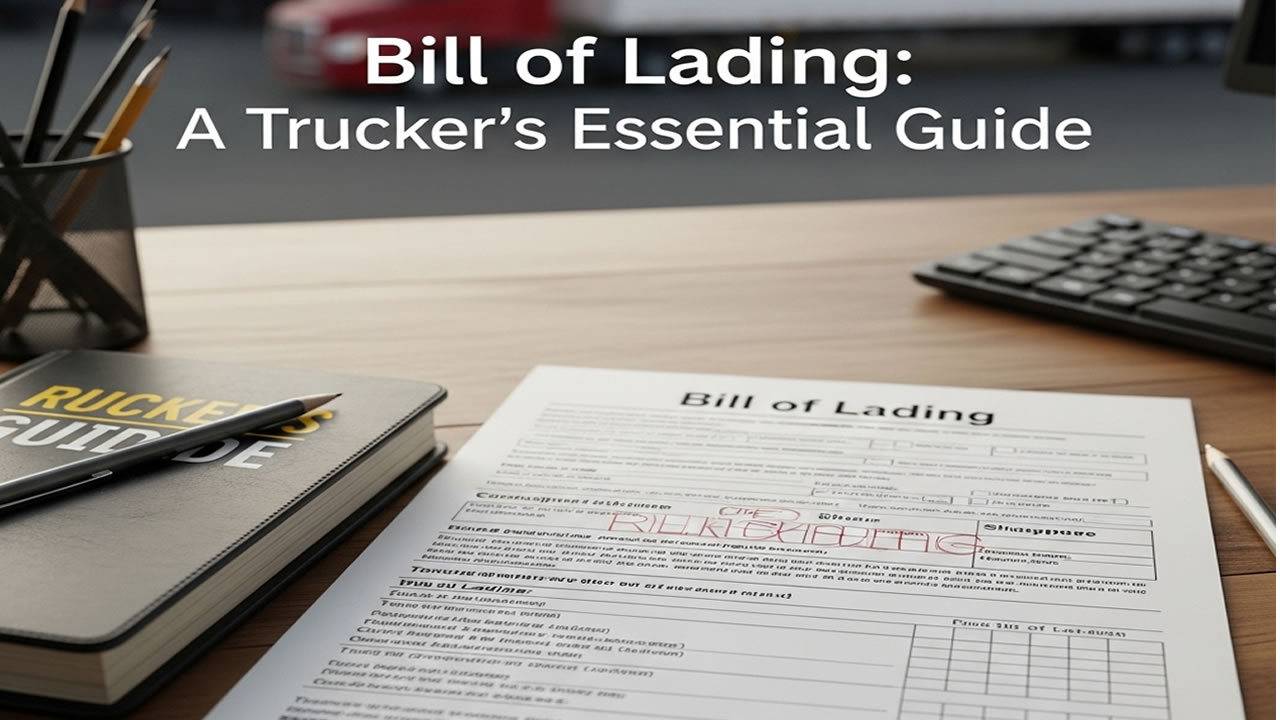What Is the Bill of Lading, and Why Is It Important?
The Bill of Lading (BOL) does much more than just one more piece of paper. In the trucking industry, it is a very important legal document. There are three main functions, namely, it is evidence of freight services, a document of title, and a contract between the shipper and the carrier. Truckers who do not strictly fill in the BOL are taking the risk of delivery disputes, late payments, or even legal complications. Whether you are a trucker who only owns one vehicle or drives for a bigger fleet, learning about the functionalities of the BOL is a must.
Key Parts a Professional Driver Should Know
A bill of lading at first view may be hardly read due to the mass of boxes and small print on it. But truckers are to be acquainted with the main parts. These are the shipper and consignee names, goods description, freight class, special requirements, and signatures. Each section that contains accurate data ensures that the pickup, the transit, and the delivery process will be done without a glitch. Errors in the BOL can result in the cause of refused deliveries and/or claims, with the denied freight being the last trouble a trucker wishes to come across.
Some of the Trucker’s Daily Bills of Lading
One size does not fit all. Different kinds of BOLs may also meet if they might be suitable for a shipment. These are the basic types you may encounter: straight BOL, order BOL, and electronic BOL. Usually, for truckers, these include the transportation of special and expensive goods. These items are necessary for you to comprehend so that you might execute the delivery correctly. For example, at the time of delivery, an order BOL may demand the presentation of extra paperwork. Being aware of these differences will prevent the driver from doing something wrong and, in this way, from losing the value.
Common Mistakes and How to Avoid Them
Experienced drivers are also guilty of a slight oversight of the BOL. Typical errors include false weight reports, unsigned consignments, and negligence in the notation of the special requirements of the cargo. These mistakes not only can hinder the cargo operation but also result in the imposition of penalty charges. So, the best solution is to never be in a hurry and always double-check the BOL at pick-up, certify that the receiver has signed it, and, most importantly, communicate with the shipper if anything is unclear before the journey commences. A few more minutes taken in checking the form will help prevent having to spend hours later solving the issues.
Why Mastering the BOL Can Boost you’re Trucking Career
Mastery of the bill of lading is not just a means or a tool to comply with the regulations. Not many know, but it stands for the truckers’ professionalism and loyalty. Carrying out BOLs timely and accurately every time helps carriers to build and develop good partnerships with shippers and brokers, which in turn might help them, get more lucrative deals and even long-term contracts. Regardless of a driver’s experience level, getting the BOL right is a clear and short way of being the best driver on the market. I mean, a driver with logistics paperwork mastery is, hands down, the most valuable asset to any freight operation
Disclaimer: The information provided in this blog post is for general informational purposes only. While we strive to keep the content accurate and up to date, we do not guarantee its completeness, reliability, or accuracy. Any actions you take based on this information are strictly at your own risk. We are not responsible for any losses, damages, or inconveniences that may arise from the use of this blog. For professional advice, please consult a qualified expert.


